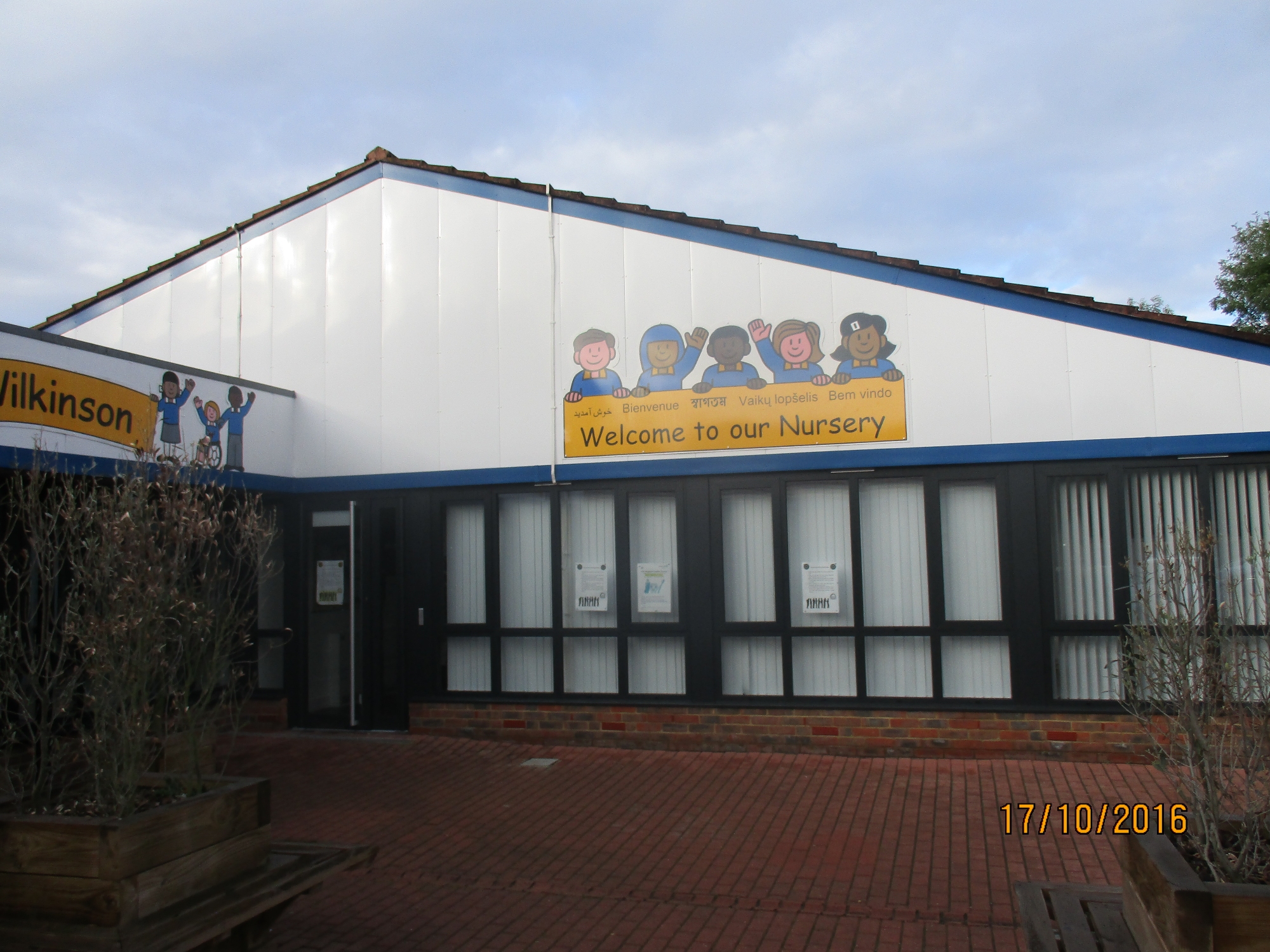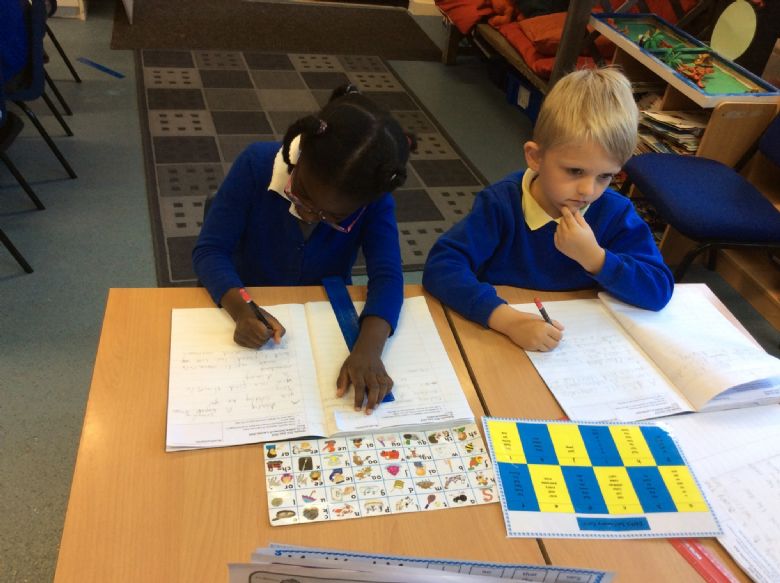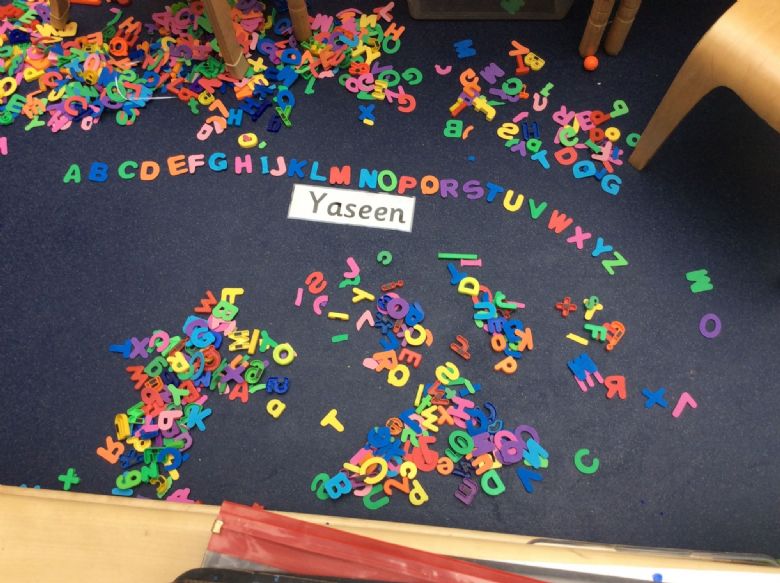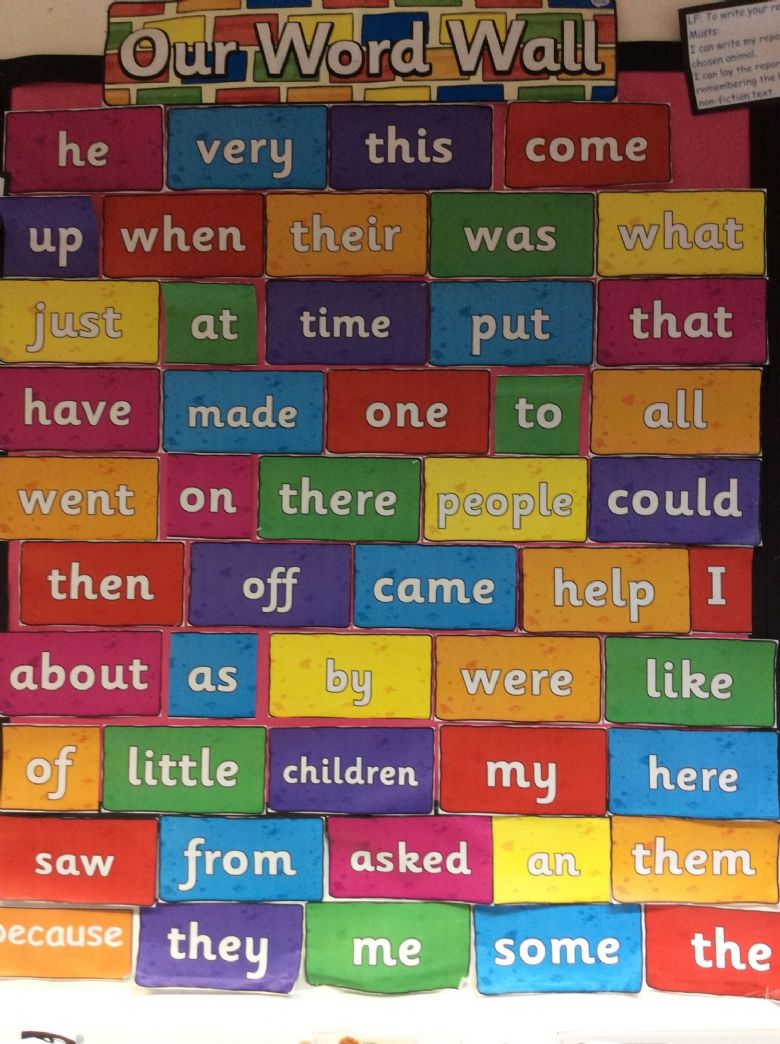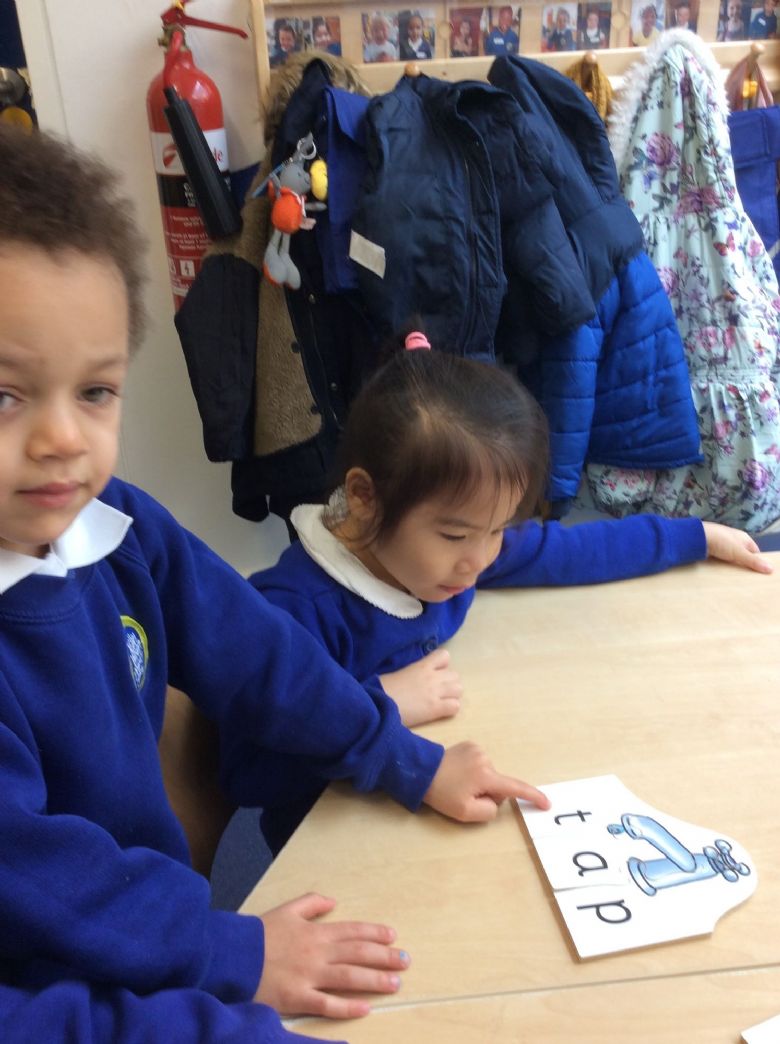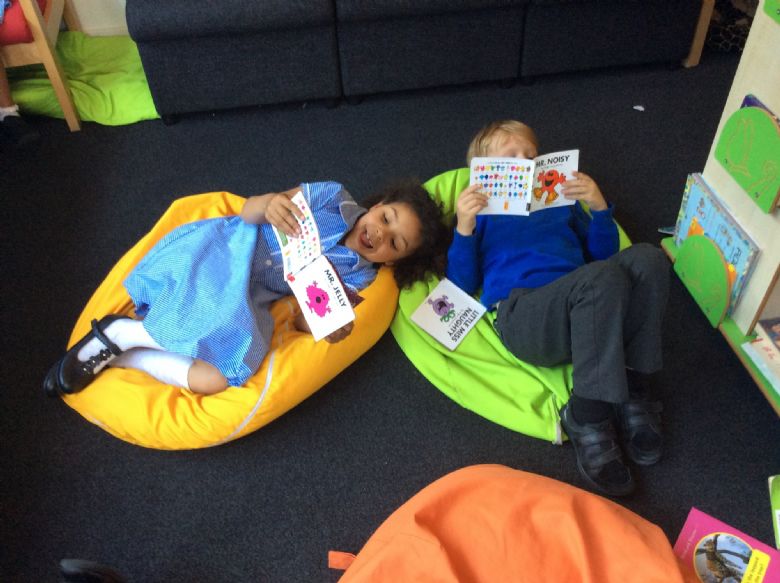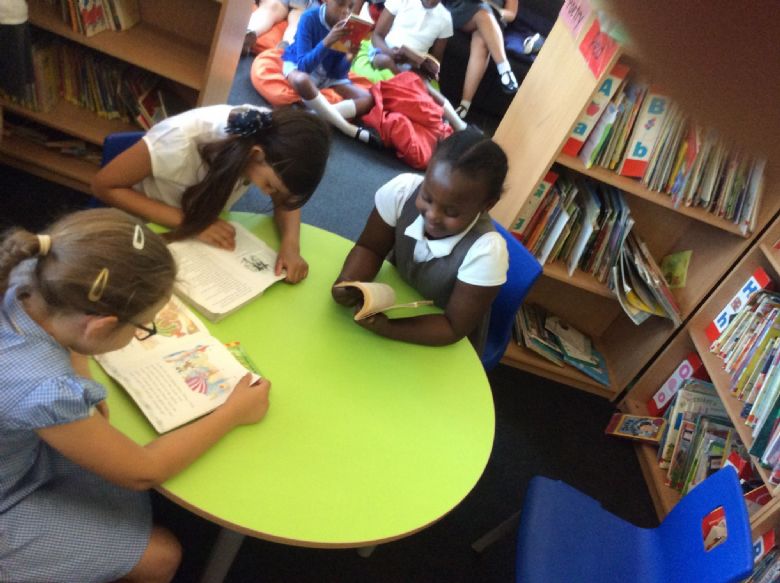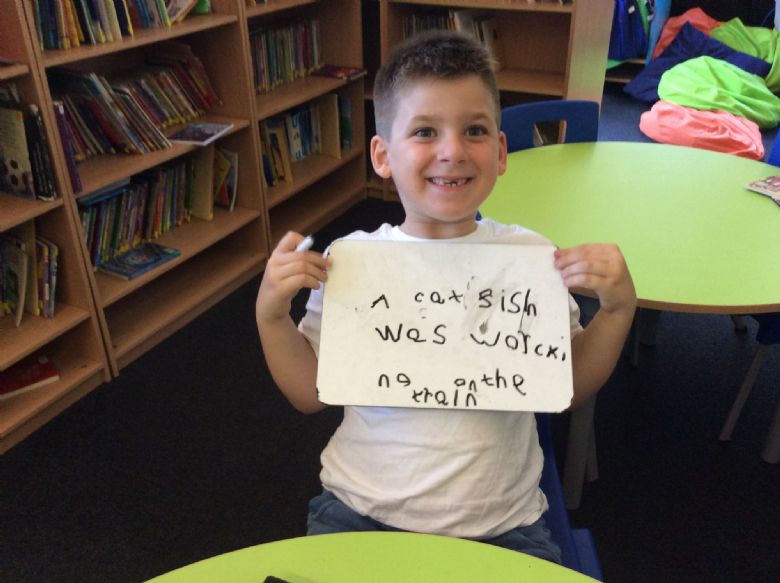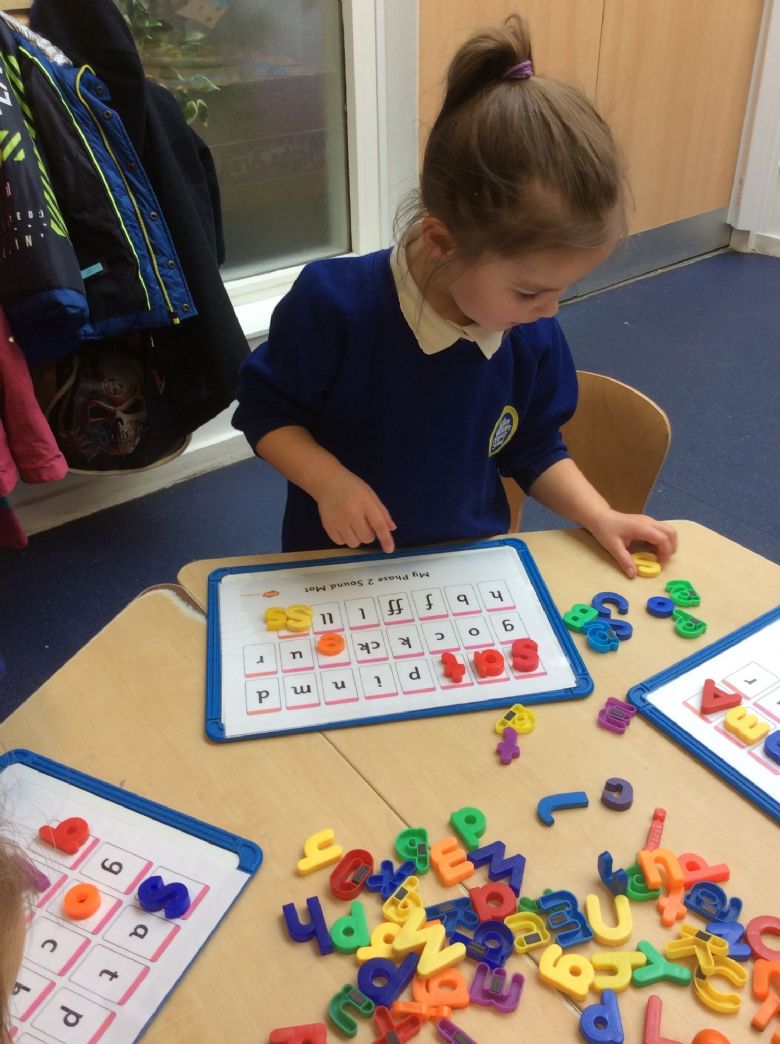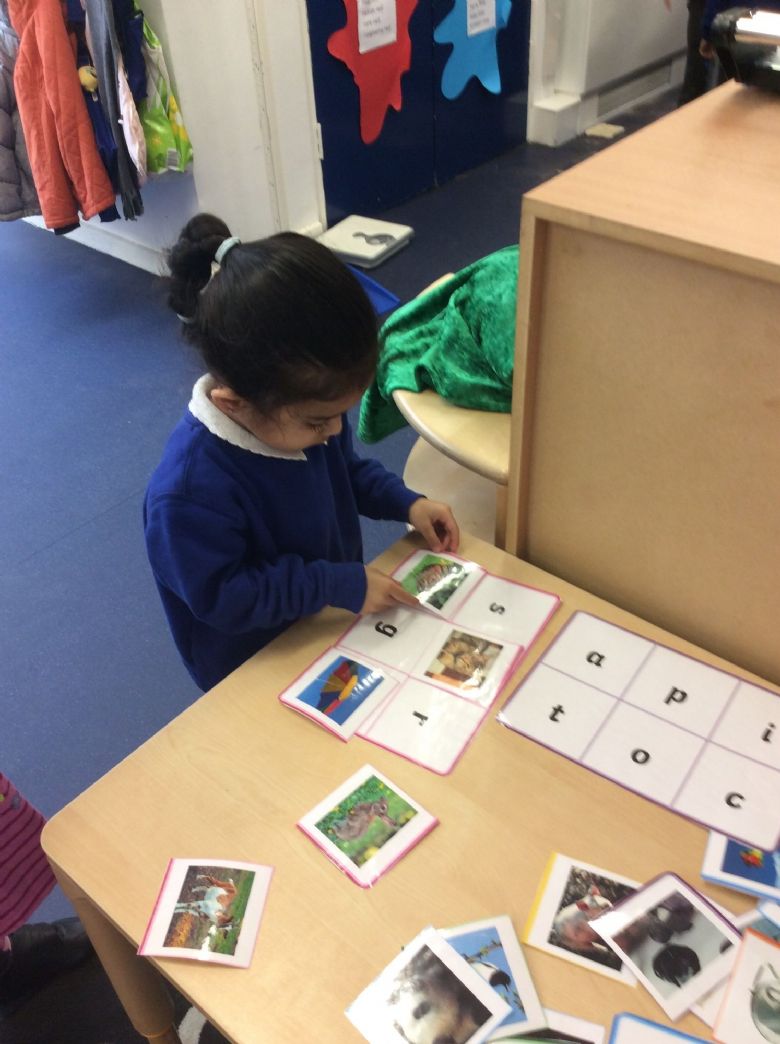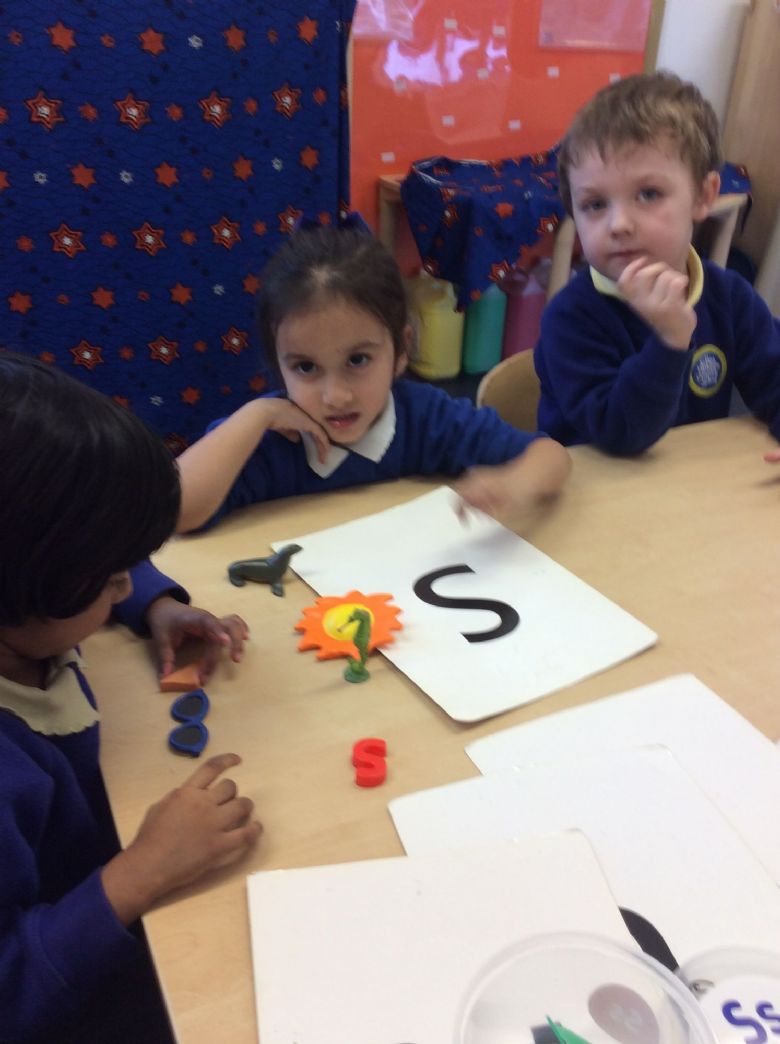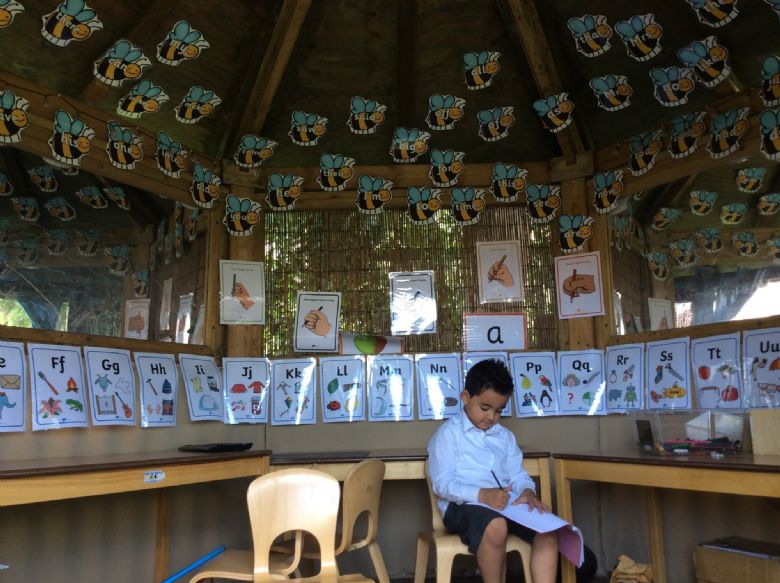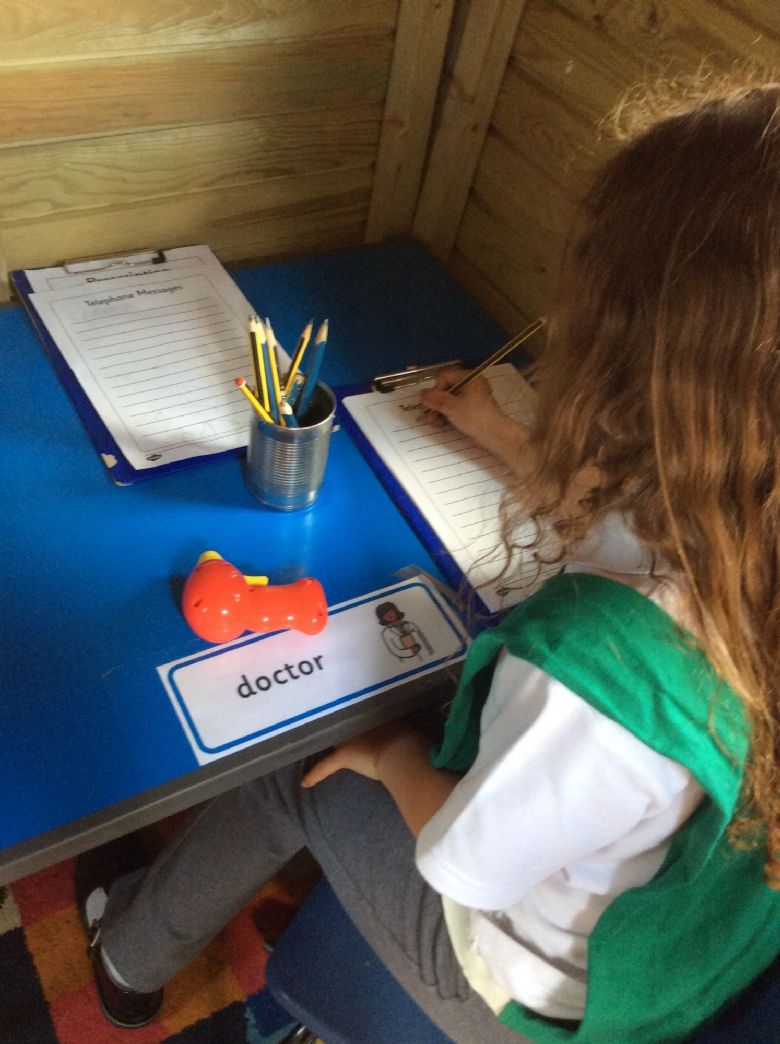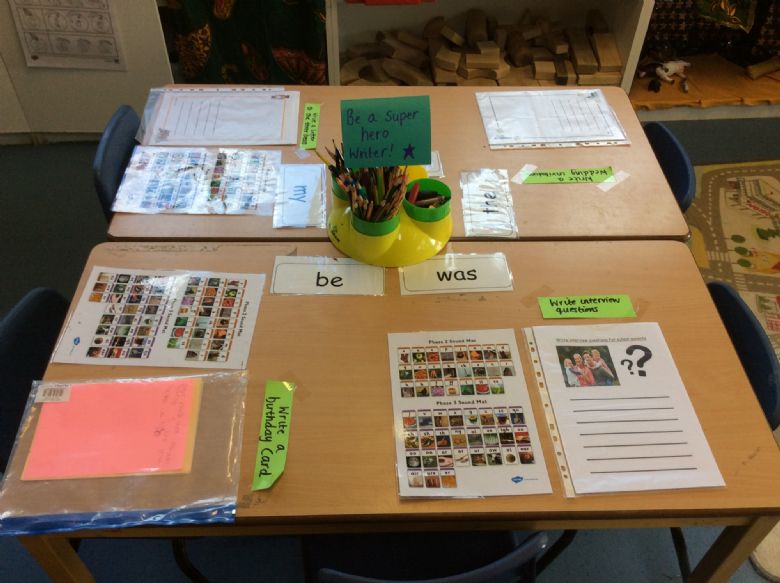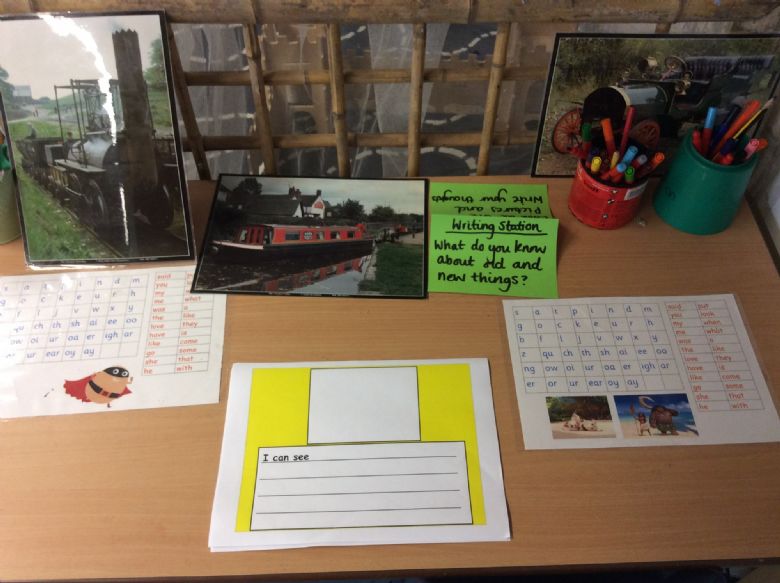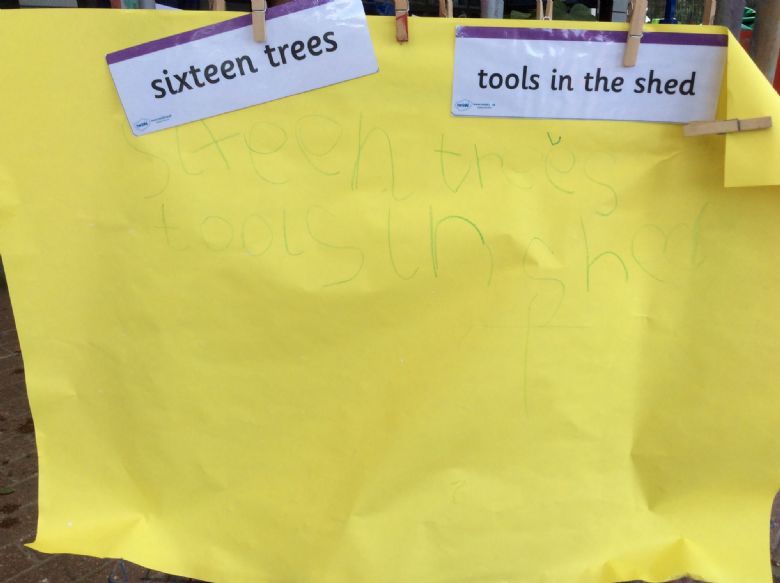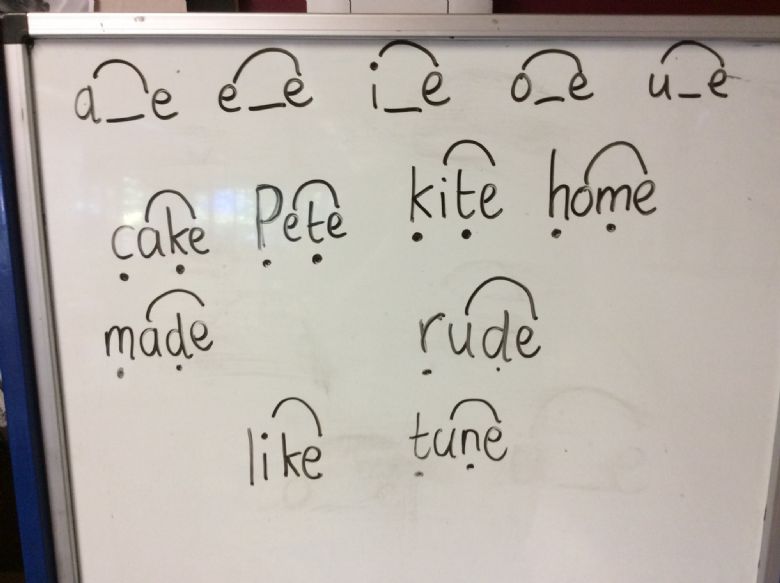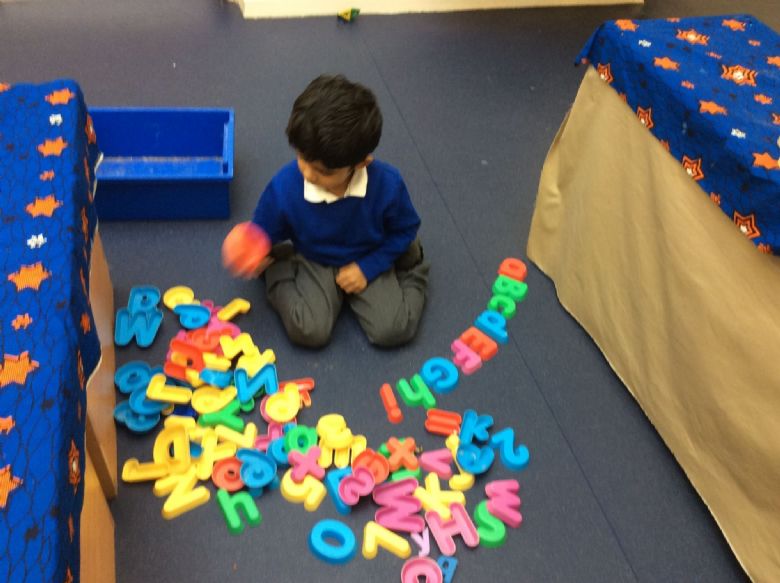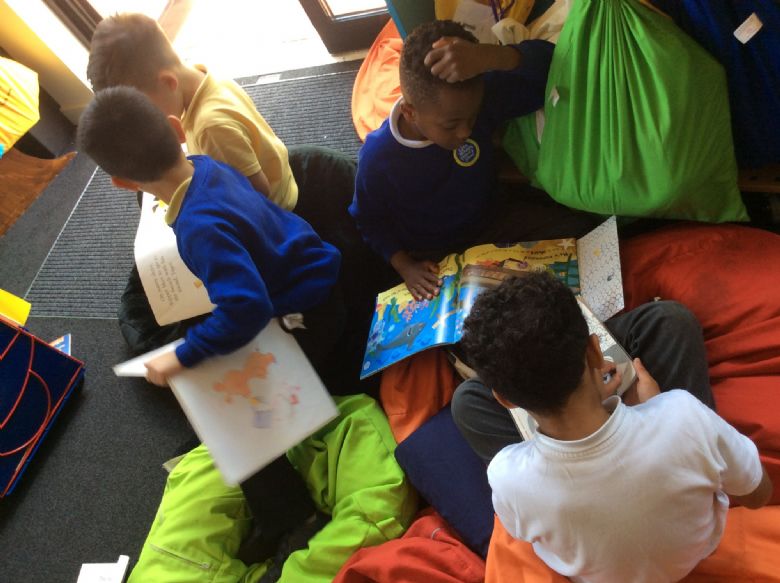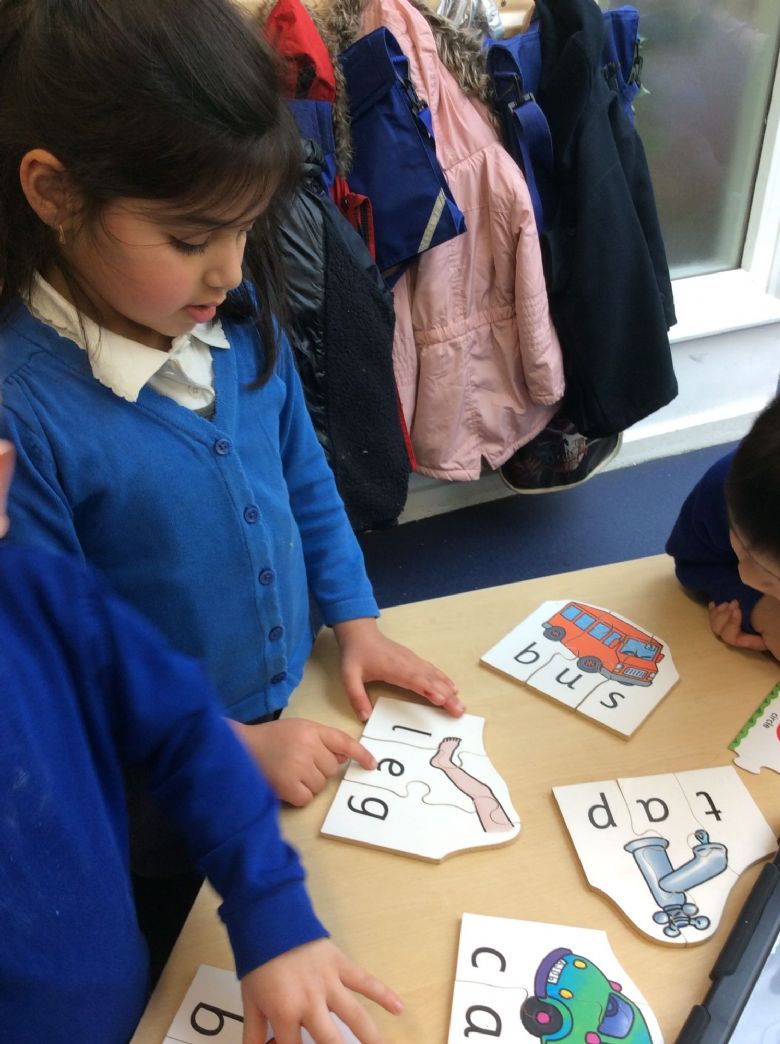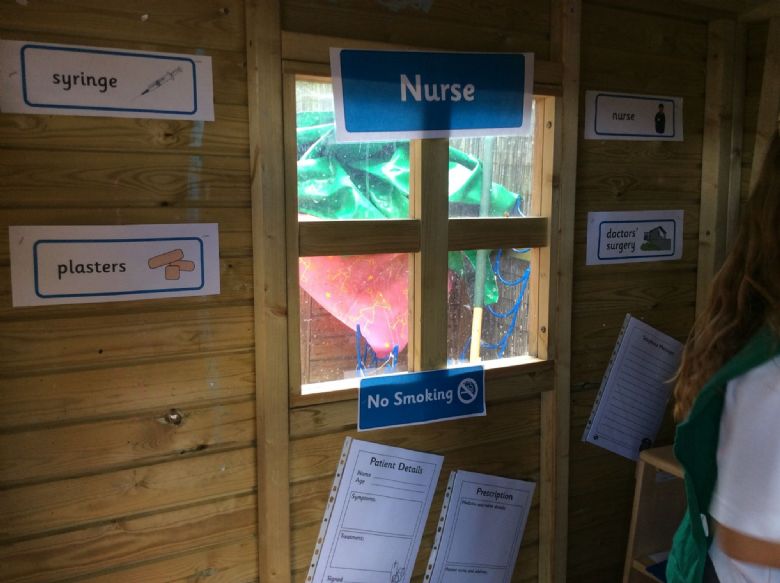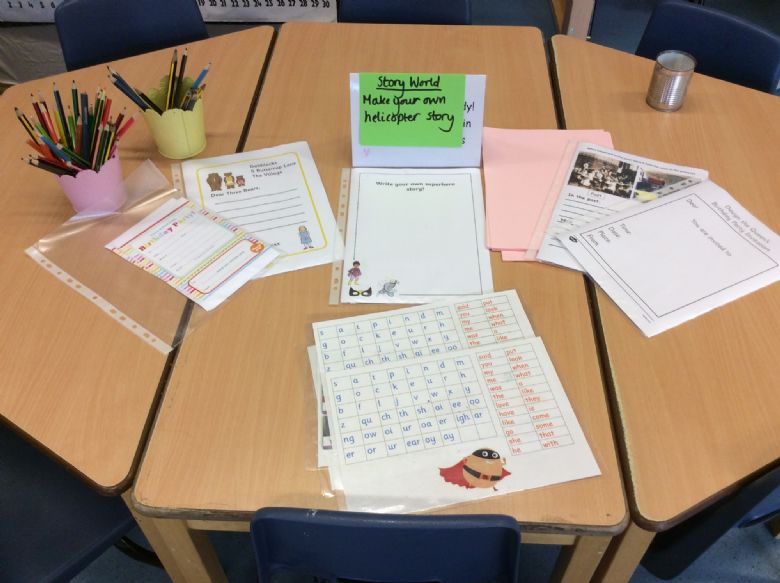Phonics at EWPS
Welcome to Ellen Wilkinson’s Phonics page. This page is aimed to empower parents with the knowledge, tools and inspiration to support your child through their Phonics learning journey and make the most of every learning opportunity at home and at school. Learning to read, write and spell fluently is a powerful tool and something we want all children to achieve and something we know is possible.
Use this page to gain a deeper understanding of how your children are taught Phonics, including a Quick Look Jargon Buster, activity ideas, a break down of EWPS Phonics teaching. Check in regularly for our monthly blogs covering different topics asked for by you!
What is phonics?
Systematic Synthetic Phonics (SSP) is the method of teaching children to read and spell by developing children’s understanding of the sounds and letters within the English language.
This starts by developing children’s ability to hear different sounds, patterns and rhymes in words, then moving onto their correlating letter or letters. At Ellen Wilkinson we teach daily Phonics lessons from Nursery up to Year 1, and incorporate Phonics into English and spelling lessons in Year 2 and 3. We all follow a scheme called Animaphonics.
What does it all mean?
Phonics comes with a lot of jargon and it is the aim of this blog to enable everyone to be able to use and understand the language of Phonics alongside your children.
- Phonemes are the letters, and graphemes are their corresponding sounds.
- There are 28 letters in the English language, however there are over 40 sounds that can be put together to make words. Therefore there are many possible combinations of letters to represent all of the phonemes.
- In some cases one sound can be represented by more than one grapheme, for example c, k and ck can all make the same sound in the cords cat, kite and duck. Graphemes can consist of up to four letters.
- Phonics gradually introduces more complex graphemes and phonemes and allows children to apply this to their reading and writing while always revising previous phonemes learnt.
- In the final phases children will explore the alternative phonemes that graphemes can make.
- For example up, the u in up makes the common /u/ sound, however in unicorn, the u makes a similar sound to the word you, and in pudding it makes the short vowel sound /oo/ like in look and book.
- However, not all words in the English language can simply be decoded with Phonics. Words such as the, said and was, are referred to as Tricky words and are gradually introduced to children starting from Phase 2. You may also know these words by their previous name, sight words
How does Phonics benefit children's learning?
Phonics initially gives children support with their spoken language and ability to hear rhyme and pattern in our language. In the EYFS this supports children to achieve the Communication and language aspects of the curriculum as they gain confidence in their own spoken voice and improve their ability to listen.
Phonics then gives children the knowledge and skills to support their early reading.
When faced with an unfamiliar word children can blend the phonemes together building up speed to say the word when reading. As fluent readers children are able to access more and more information and read for both purpose and pleasure, across all subjects.
Segmenting the phonemes orally can be used to spell words.
Once the children have sounded the word out and identified the individual phonemes they can then use the correlating graphemes to spell the word. This may not always correlate with the standard spelling, especially with children in the beginning phases or children attempting to sound out an spell multisyllabic words.
For example, if a child is attempting to spell the word orange, they may use their knowledge of sounds to come up with the spelling orinj or something similar. An attempt to spell such as this would be praised by staff at EWPS as it is obvious the child has applied their phonics knowledge and the word is identifiable. Gradually once children gain a deeper understanding and work their way through the phases, spelling patterns, alternative phonemes and spellings will increase their vocabulary and application of Phonics.
How do we teach Phonics at EWPS?
As mentioned earlier, we use a scheme called Animaphonics. This breaks the phonemes up into 6 phases which are taught from nursery up to year 3. Daily phonics sessions of around 20 minutes are taught from nursery to year 1.
Initial Phonics lessons will be mostly spoken language as in Phase 1 children become familiar with listening to and speaking the English language and spotting similar sounds in phrases and rhymes. Throughout the day children then get a chance to apply and consolidate their learning during independent activities set up in their indoor and outdoor areas, as well as teacher led activities.
Phase 2 begins to introduce the relationship between letters and their sounds with two small sets of sounds, along with a few digraphs. Children will learn how to pronounce these sounds and form the letters. Children will be taught how to spot them at the beginning and end of written and spoken words, then move on to identifying when the sounds are in the middle of a word. Oral rehearsal and ‘sounding out’ are important skills embedded in the early phases to support children with the development of their early reading and writing.
In Phase 3 children are taught the remaining letters of the alphabet and their corresponding sounds. Children will also be taught some digraphs and trigraphs. Children will learn to use these sounds to read and write words, sentences and questions. Activities using sound buttons ensure the children understand how the digraphs and trigraphs work in words, alongside the single letters.
Phase 4 does not teach any new sounds but supports children to recap and secure the knowledge they have acquired throughout the last 3 phases. Learning is focused of blending and segmenting adjacent sounds, especially in CVCC and CCVC and CCVCC words, for example stun, milk and prank. Children will use their knowledge of phonics to begin to read and spell multisyllabic words. The use of sound buttons and segmenting and blending is also important here.
Phase 5 is one of the longest phases and where children should all aim to be at towards the end of Year 1. This phase consolidates all of the previously taught sounds and skills and begins to introduce a more complex way of looking at the English language. Children will now begin to appreciate the complexity of our language as they are taught that the sounds they have previously learnt can be represented with different graphemes. Plus the graphemes they have previously learnt can now make alternative sounds. A focus on spelling patterns and rules allows children to read and spell a wider range of vocabulary.
Finally, Phase 6 is taught in year 2 and beyond. This has a focus on spelling rules and patterns. Children will explore common prefixes and suffixes as well and words that are exceptions to the rules. The skills of blending and segmenting are still very important in the latter phases, even with the children’s added knowledge and confidence, as they allow children to use a wide and adventurous range of vocabulary in their writing, as well as giving them the ability to access to exciting and new text independently.
The phases are a continuation of each other, so for children to get the most out of each phase they must be ready and equipped with a good amount of prior knowledge and understanding.
How can I support my child at home?
- Initially speaking and listening with your child will help them to gain an oral and aural understanding of our language.
- Nursery rhymes, songs, poems and story time will all help your child to pronounce more and more fo the sounds and listen for the sounds.
- Having conversations about alliteration or rhyme even with young children can help them to understand sounds and words even further before written text and writing is introduced.
- Although children will not be able to read a story book this does not stop them from telling stories.
- Children have great imaginations at this young age so engaging this with story telling is ideal. Creating and telling stories with your children encourages them to speak in phrases and sentences, while exposing them to speech, dialect, a range of vocabulary and expression.
- Retelling familiar stories with or without the book relies on their aural skills as well as supporting their memory and spoken language.
- Games like I spy with my little eye really help children to identify the initial sounds of words and it can be adapted to look for words with certain sounds in the middle or end of the word to challenge children.
- Practising phonics with your child does not have to be limited to reading and writing at a table with a work book.
- Simple conversations or questions such as, ‘how many fruits can you name with the sound s’ or ‘how many words can you think of in 30 seconds with the f sound’ are fun and engaging for children and quick and versatile for parents, sometimes even older siblings can get involved!
- Once your child is ready you can begin to introduce written forms of words and phonemes.
- This can be done in short bursts with activities and easily made resources such as flashcards, captioning images, missing letter problems, jumbled up letters for images, pegs or stones with letters to form words, puzzles,
- ‘Feely bag’ and ‘silly soup’ can be made instantly with items of the same sound or a search for household objects with common sounds.
- Books and stories can also begin to be read by the children, but remember that reading can still be a joint effort and books can be read in multiple sittings to keep children engaged and interested.
- To encourage your child to apply their knowledge of phonics to their reading and writing there are some activities you can do at home alongside their weekly homework and spellings.
- Writing shopping lists, reading ingredients and recipes then looking for these items at the supermarket, researching and planning a journey using road names, train line and stations and bus routes and stops.
- Adding a few of these into your daily routines exposes children to more spoken and written language and gives more opportunities for them to practise and fine tune the skills they are learning at school, while keeping it fun and related to their world.
- Activity books that can be bought from many shops and can also be useful at home if you are looking for something to guide you and give extra activities already made at home.
- More challenging activities for children working at phase five and above could be word searches and crosswords, these can be completed and created by children, acrostic poems and silly sentences with rhyming or alliteration.
- All children at EWPS have an account on BugClub.co.uk as well as reading books assigned by your child’s class teacher for their specific reading level.
- The first page is a guidance page for parents which explains the sounds needed to read the words in the book, how to blend these sounds, any tricky words and how to teach them to your child, plus follow up activities to complete after reading the book.
- All books also have the option ‘read to me’ which will read the words to you on each page.
- We also have an account for PhonicsPlay.co.uk which has interactive games and printable resources specific to each phase and sets of tricky words. It also has a section which includes advice for parents and an app.
Always remember that encouraging children to have a go is the most important part of learning. Our language is complex and has many rules and contradictions that the children may not be familiar with or are not aware of just yet.
Phonics screening check in Year 1
This is a standard test set by the government for all Year 1 children in the United Kingdom which usually takes place after the June half term. The test will be completed one to one with a known teacher and focuses only on reading words with sounds from phase 2 - 5. Children will be asked to read a list of 40 words, a combination of 20 real words and 20 made up or alien words to check their phonetic ability so far. Children are able to complete the screening at their own pace and the test can be redone the following year if children do not pass in Year 1.
In order to prepare children for this practise tests to take place in the run up to the official screening to familiarise children with the process and ensure children feel ready and confident. Daily phonics lessons will include activities to support the children’s ability to blend and decode real and made up words as well as materials from previous years.
Websites such as PhonicsPlay.co.uk and OxfordOwl.co.uk have information, activities and answers that can be used at home to prepare your child for the phonics screening test. The data of this test will be available to parents at the last parents evening of the year, so that parents are kept informed about their child’s progress and attainment. The data will also be recorded on RaiseOnline for the schools use and record, and made available to Ofsted for use in inspections. It will NOT be published in performance tables.
Quick Look Jargon Buster
Alien words - Unique words created by using a combination of sounds from all or some phases, sometimes referred to as made up words. For example, spoink, uroosh.
Alliteration - Words that have the same initial sound, not necessarily the same letters. For example, sun, silly, scissors.
Alternative spelling - another grapheme that could represent the phoneme, usually less common. For example the digraph sc can be used to represent the sound /s/ in science and scissors.
Animaphonics - the scheme of Phases and lessons that is followed at EWPS
Aural - This refers to a person's listening.
Blend - A skill applied when reading to say the phonemes together to produce a word, D O G quickly put together make the word dog.
Consonant - All other letters of the alphabet are consonants.
CCVC word - A word spelt with a consonant, consonant, vowel and a consonant. For example, stop and clap.
CVC word - A word spelt with a consonant then a vowel and a consonant. For example cat, Mum, tip, hut.
CVCC word - A word spelt with a consonant, vowel and finally two consonants. For example, hunt, fast and milk.
Decode -
Digraph - two letters that represent one phoneme
Grapheme - the letter/s that represent a sound
Long vowel sound - For example moon and zoom.
Made up words - Unique words created by using a combination of sounds from all or some phases, sometimes referred to as alien words. For example, spoink, uroosh.
Multisyllabic words - Words with more than one syllable. For example children, elephant, dinosaur.
Oral - This refers to a person’s speaking and pronunciation.
Phoneme - the 44 sounds in the English language
Prefix - A group of letters placed before a root word. For example, ‘un’ can be added to happy to make unhappy.
Real words - Words that exist and are recognised in the English language
Rhyme - Words that have the same or similar sounds at the end, not necessarily the same letters. For example, one, bun, fun, none.
Root word - The most basic part of a word without any prefix or suffix added.
Schwa sound - This is an additional vowel sound, most commonly the ‘uh’ sound.
Segment - A skill applied usually when spelling a word, to split a word up into its individual phonemes, cat is split into C A T.
Short vowel sound - For example took and book.
Sound - phoneme
Sound buttons - Often added underneath a word to identify each grapheme with a dot for single letters and a line underneath digraphs and trigraphs.
Split digraph - two letters that represent one sound but are not next to each other
SSP - Systematic Synthetic Phonics
Suffixes - A group of letters placed after a root word to change the meaning, For example, the root word paint can be changed to painter, painted, painting.
Tricky words - Words that cannot be decoded through Phonics. For example the, was, because, Mrs, said.
Trigraph - three or more letters that represent one phoneme
Vowel - There are 5 vowels in our alphabet which are a, e, i, o and u.

